The K-9 Tactical Release
The "tactical release" is a technique used in the application of a police service dog to control a suspect. In contrast to lifting off of a bite suit (or "taking the dog off strong," as it is often called in training) or choking the dog off, which are training practices, the tactical release is a very specific tool in the K-9 handlers toolbox. It enhances safety for the handler, backup officers, and the suspect when applied at an appropriate time and situation. It affords a simple, reliable and safe means of removing the police service dog from a physical apprehension of a suspect.
To the uninformed, it may appear that the dog is being choked from a bite or that the handler has no control of his or her police service dog and has to physically remove the dog from an engagement with a suspect or decoy. Yet, this technique is safe for the dog, handler, arrest team, and the suspect. Let's explain what the tactical release really is and when its application best fits as a safety option during a deployment and subsequent capture of a potentially violent suspect.
Performing the Skill
The tactical release is a mechanical release from an engagement with a suspect that causes the police service dog to gag or release in anticipation of gagging. It's performed by one of two usual methods. First is the two-handed approach in which the handler, once determining it is safe, grabs the fur saver collar at six and three o'clock. The collar is then brought up as far as possible on the dog's throat. By rotating the hands outward and pushing the dog in and upward, we initiate a gag reflex from the dog. Many dogs will respond to the positioning of the collar to release in anticipation of the gag reflex—thereby, releasing the suspect (Figure 1).
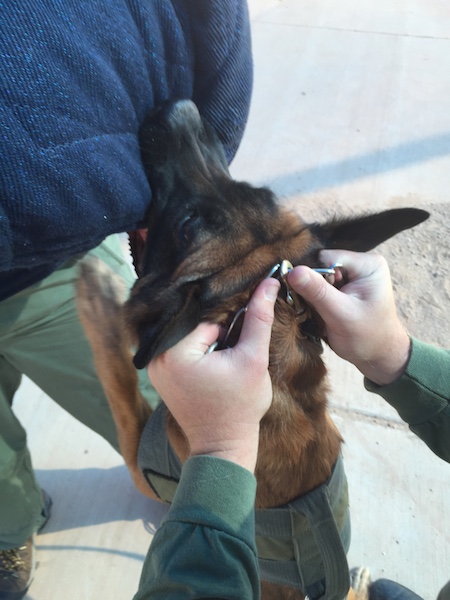
The second approach is one-handed. In this method, once the handler deems it safe, one hand is placed inside the fur saver collar with the back of the hand facing the dog. The collar is brought up high on the dog's neck. The live ring of the collar (the one you pull to decrease the collars circumference) is pulled tight and placed inside the hand and gripped. The collar is then high on the dog's neck and the handler pushes the dog up and into the suspect, causing the dog, once again, to gag or anticipate the gag and release the suspect (Figure 2).

Applications and Examples
The tactical release is often applied under conditions in which it's possible, and undesirable, for a re-bite on the suspect (or other officers on the arrest team). It's also used to ensure the control of the suspect isn't compromised, moving from control using the dog, to control using other techniques in the process of an arrest, thereby never losing contact with the suspect. Its use is predicated on a safe approach to the suspect.
Let's take a look at a potential scenario in which the tactical release may prove effective.
A suspect of a violent crime exits a building during failed negotiations and attempts to flee through the perimeter. The suspect has been seen armed, although upon exit there is no weapon clearly visible.
The police service dog is deployed and makes a physical capture of the suspect. An arrest team and handler approach the suspect and arrest team members move to control extremities for handcuffing. Once they are hands-on, the handler moves in to perform a tactical release, does so, and removes the dog from the arrest process. He or she does this while controlling the dog's head, preventing any extra injury to the suspect or backup/arresting officers.
In this situation, the handler has moved from control using the K-9 to control by the arrest team seamlessly, and in doing so the handler has decreased the potential for unintended injury to either the suspect or the arrest team members.
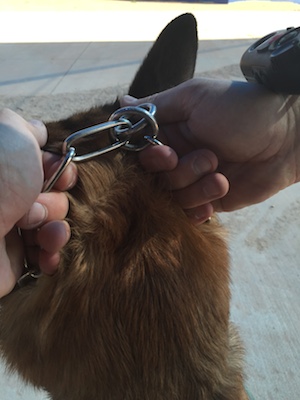
What's Needed
There certainly are other approaches that could be used in this scenario, depending on other variables, but this is one technique every handler should be capable of performing. Practice it during training frequently and include arrest team officers in your practice sessions.
To include this in your repertoire of techniques used in fielding a police service dog you will need a few things.
First, a fur saver-type collar seen in the accompanying photos is an important asset on the road. This type of collar provides multiple points for attaching a lead. This collar affords less fumbling to locate an attachment point than other types of collars in an evolving and sometimes hectic event. This works well with either the one- or two-handed approach. Note: The fur saver must be the highest collar on the dog's neck during the tactical release, so handlers who use multiple collars on the road (such as an electronic training collar) must be aware of this as they organize their equipment.
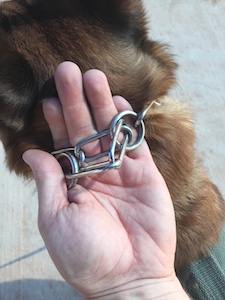
The tactical release can be performed in very quick order on the street, in the order of just a few seconds. It affords control of the business end of the police service dog in tight quarters when the suspect is active. This will keep arrest team members out of harm's way. When performed correctly this technique is not a lift off or a choke off. It activates the gag reflex or avoidance of the gag reflex in the vast majority of police service dogs.
When closing the gap with a potentially violent suspect, the police service dog can be a key tool in law enforcements toolbox. The tactical release can expand the usefulness of the police service dog under some conditions while affording increased safety to the handler and arrest team. It should not be seen as an alternative to a verbal release from a suspect. Remember: Handlers and search teams must drive the tactics, not the police service dog—and especially not the lack of training of the police service dog.
Safe searches, handlers, and keep training!
For information on Kevin Sheldahl, view http://k9services.com.
For more great police training articles, check out Calibre Press.
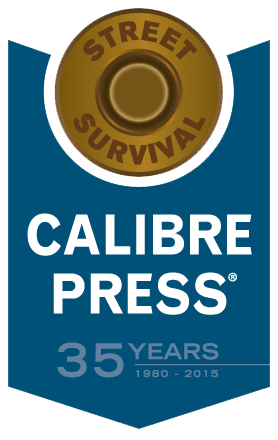






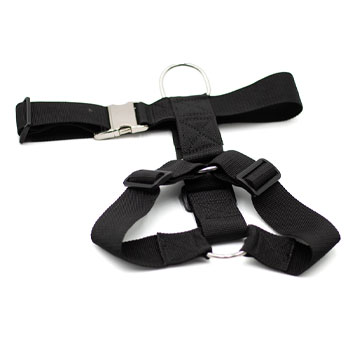



0 Comments
Ask Cindy
Sorry, adding comments is currently disabled.